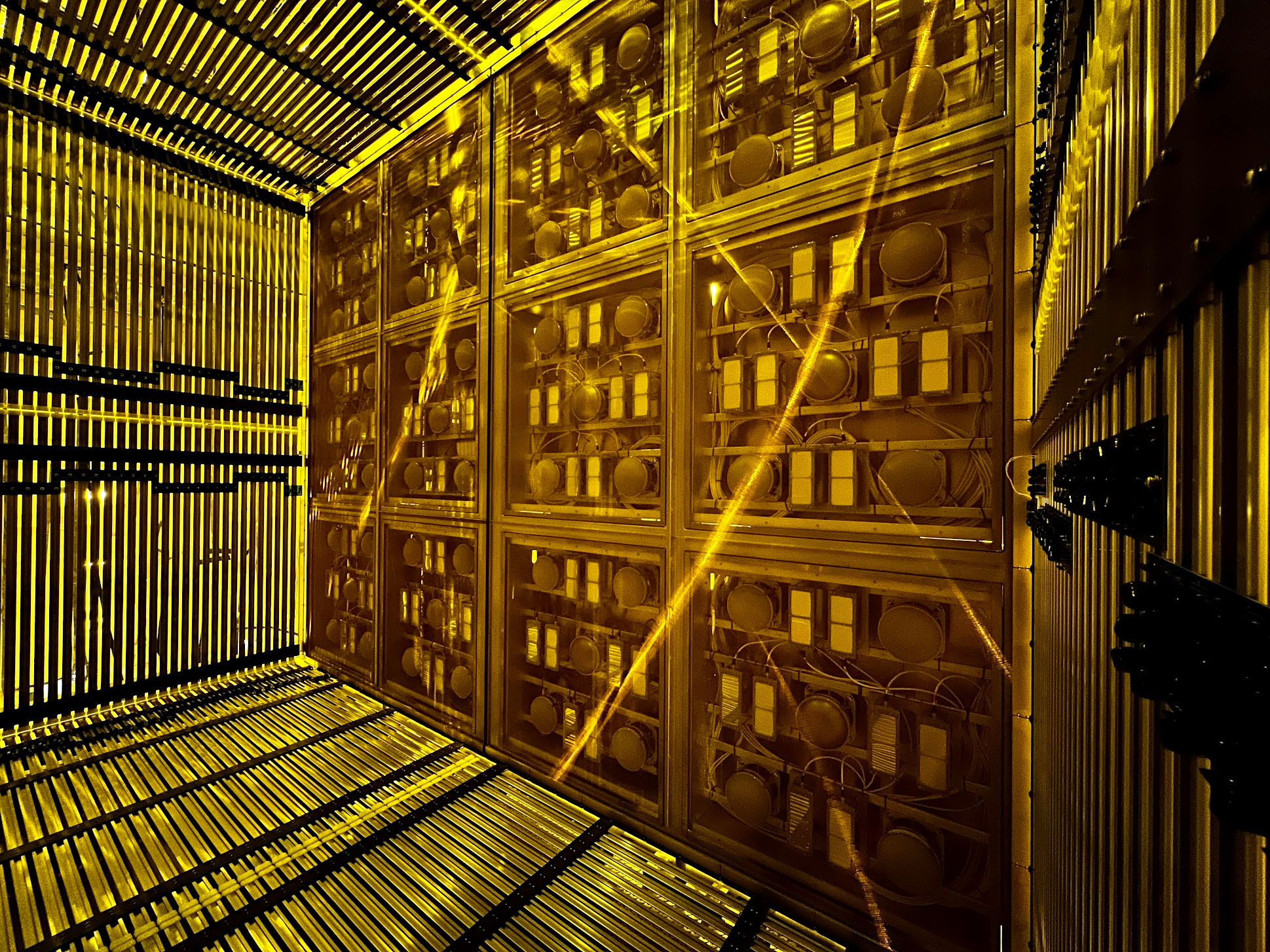The Short Baseline Neutrino Program (SBN) is a collection of three experiments located in the booster neutrino beam (BNB) at Fermilab. The experiments are designed to study neutrino interactions with liquid-argon time projection chambers (LArTPCs). The three experiments, SBND, MicroBooNE, and ICARUS, are located between 100 and 600 meters from the neutrino source of the BNB.
The data collected by these experiments are used to search for new physics such as sterile neutrinos or dark matter, and to better understand neutrino interactions in argon. The physics of these interactions is an important element of next-generation neutrino experiments that will employ the LArTPC technology, such as the long-baseline Deep Underground Neutrino Experiment (DUNE).

MicroBooNE
The MicroBooNE experiment has an instrumented volume of 85 tons of liquid argon exposed to the BNB and NUMI beams at Fermilab. Particle interactions are detected by drifting ionisation charge to wire plane in an electric field of 273 V/cm. MicroBooNE’s main focus is studying the low energy excess – an anomaly first observed at the MiniBooNE experiment, which has been interpreted as a possible sterile neutrino signal. MicroBooNE also studies neutrino-argon interactions and searches for dark-matter particles and other new phenomena.

The MicroBooNE experiment concluded its data taking run in 2021 after five years. Analysis of this large data set is continuing.
SBND
As the closest detector to the beamline, the Short Baseline Near Detector (SBND) will be exposed to the highest neutrino flux of the three experiments, recording over a million neutrino interactions per year. By providing such a high statistics measurement of the unoscillated neutrino content of the booster neutrino beam, SBND plays a critical role in performing searches for neutrino oscillations with the short-baseline detectors. The large data sample will also allow studies of neutrino-argon interactions with unprecedented precision. SBND detected its first neutrino events and commenced data taking in Summer 2024.
Imperial Contribution
Imperial College physicists played a central role in the operation and data analysis for the MicroBooNE experiment and in the construction of the Anode Plane Assemblies for SBND. The Imperial group specialises on applying machine learning techniques to the image-like reconstruction of the data to search for new phenomena such as the production of particles related to the dark sector.
SBN at Imperial
Contacts
Professor Stefan Söldner-Rembold
/prod01/channel_3/media/images/non-standard-dimensions/stefan.jpg)
Professor Stefan Söldner-Rembold
Professor
Current Group Members
Stefan Söldner-Rembold, Anyssa Navrer-Agasson, Pip Hamilton, Alex Hergenhan, Joseph Bateman, Nicholas Lane.
